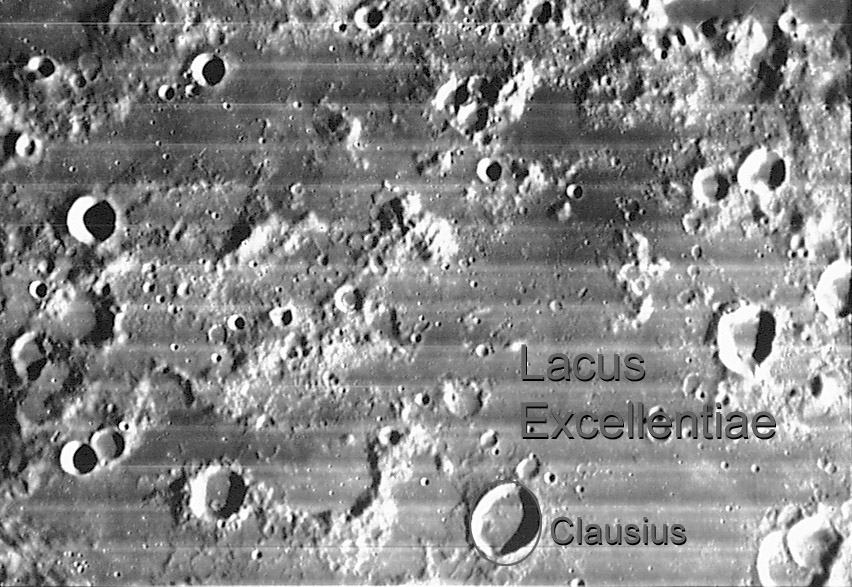
image by Lunar Orbiter IV
On Wednesday at the Lunar & Planetary Science Conference in Houston, Bernard Foing, the SMART-1 lunar probe project scientist, reported on the progress of the mission and its planned crash on the night of Sept 2/3, 2006. The good news is that SMART-1 has captured thousands of images of the Moon; the bad news is that because of the daily pressures of flying the mission the team will not have time to start archiving the images and release then until after the impact. Between now and September they hope to continue to acquire multi-spectral images to map the composition of the Moon. And from June thru impact the closest approach to the Moon will be reduced from 300 km to 200 to 120 to zero, with the resolution improving as the altitude drops. The impact point and time are still somewhat uncertain, but it is planned for between 00:30 to 02:00 UT on Sept 3 with a plus/minus 7 hour uncertainty. The impact point is expected to be about 34S, 44W in Lacus Excellentiae. The spacecraft will come in from the north, passing over Mare Humorum before hitting the surface at an angle of only 1 degree! It will be an extreme oblique impact (as formed Messier) and is supposed to occur just on the night side of the teminator. The 385 kg spacecraft will hit at a speed of 2 km/sec and, especially with its remaining 3 kg of hydrazine, may make a significant explosion and flash. It is expected that the cloud of ejecta will cover an area of 50 square km and might be visible for a few minutes. The heat from the explosion is estimated to be detectable for a few hours for infrared sensors. The crater may be only 3-10 m in diameter, and should be elongated; it is hoped that a future lunar orbiter will image it. I recommend that amateurs start acquiring high resolution images of this area and experiment with filters in the far red – many ccd cameras (and webcams?) are sensitive out to about 0.9 microns. There will be an effort to provide information to amateurs so they can help document the impact. But with the long hours of uncertainty of the time of impact it may be necessary to use a video technique. Some people may want to not image the unpredictable flash but wait until they see it and try taking high res images of the cloud. If it lasts 2 minutes it should be possible to get a number of images to document it changes – make sure to check timing with WWV or similar time signals. There will be a lot more information in the coming months, including an amateur lunar imaging competition!
PS - Do you see the unusual concentric crater to the left of center?
Technical Details:
Lunar Orbiter IV image 148 H3 from LPI. I do not have my Rükl so cannot put at X at the tentative impact point – I think it is within this view!
Related Links:
Foing’s Lunar & Planetary Science Conference abstract
Planetary Society blog on this discussion
Yesterday's LPOD: Almost Nothing
Tomorrow's LPOD: Limb Strip
COMMENTS?
Register, Log in, and join in the comments.



